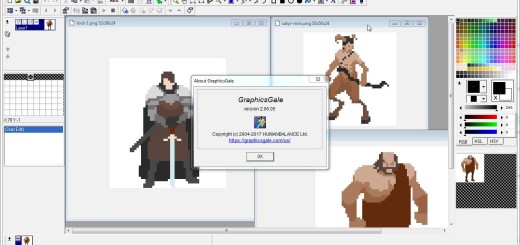A Game Developer’s Note to Game Programmers.
Building a game could get you confused easily in its hard labor game development methods – so easy in fact, that we can overlook the properties of a game that make them enjoyable to play with. This note assumes a docile reminder of what propels the players to play games. Always remember the reminders in this manuscript should you get blanked out or battle your way with confusing C++, Visual Basic, Java, or lines and lines of Game Maker Language statements and DLL structures.
1. Don’t ever neglect the idea of a player taking the main character role. Gamers play games to obtain the luxury of having the sense of control. If you are able to program your game in a way that renders the player in control, then you’ve already won half the battle. This doesn’t necessarily mean to make the game so much easy to play with. It simply means that when a gamer runs home from school or drives home from work to play a video game, she wants to feel the control that she didn’t have during the hours between nine and five. The outcome of a game – whether it’s a win or a loss – should never be random, but the result of a good, controlled game play instead.
2. Give your game a KISS? yeah, the “Keep It Simple Stupid” Kiss? We all know that programming a game is hard business, but believe us when we say we don’t want to be reminded of it. The difficulty of programming a game should never be part of the game play so when possible, make the game easy to start, easy to navigate, and of course, easy to play. We’re not asking for pre-school strategy here, but on the other hand, we don’t want to feel as dumb as a pre-schooler either. Forget the hundred page manual. Nobody except the truly obsessed is going to read it anyway. Build your game for the average Joe and everyone will be your fan.
3. Add plenty of action. And add lots of it too. The more action you add to your game, the more attention players will pay attention to it. And the more that players pay attention to your game, the more addictive your game gets. For every action that a player’s character makes, have the game react and then prompt the player for more.
4. Make the story a good one. Nothing is worse than playing a game only to wonder what you’re doing and why. Purpose is and always has been a human obsession. But without it, we’re left wandering… in the darkness… wondering bizarre things like how the house would look in a coat of bright pink paint. Don’t give your players the opportunity to waste time like that. Give them a mission and make sure your game reminds them what the mission is at opportune times and why they must complete it.
5. Employ Cool Graphics. But make it relevant. The graphics in a games shouldn’t be distracting, they should make our eyeballs glaze over with satisfaction upon seeing them, and then salivate for more. Graphics should contain clues and entice us further and further into the game until we’ve beaten the thing. As a matter of fact, graphics when aesthetically donw well, they could even attract people to play your game even if your game play is not on par with a nicely designed game.
6. Make it real. Fantasy games are okay, but what makes them cool is the fact that they’re realistic. It’s hard to get into something that isn’t familiar or that there’s no way we could ever experience. But if you can implement some reality into your games, players will appreciate it and relate to it on a whole new respectable level.
7. Bonuses, are your number one compensation plan for a game suffering from being stale and repetitive, this is a point when a player feels that playing the game any longer is comparable to running a brainless chore. Give your players whatever incentives they could get upon playing repetitive aspects of your game, any virtual thing of value as a reward to players to have them stay in the game longer.



Comments